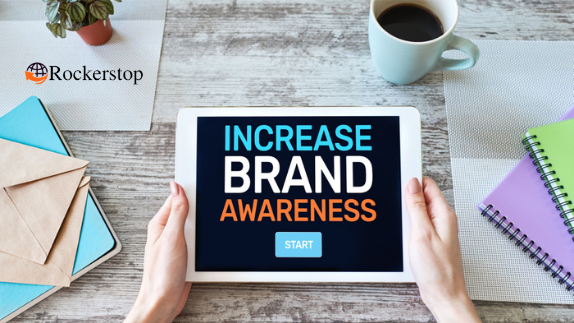Seven Ways to Build Brand Awareness
Brand awareness can seem like an abstract concept. How does one make people conscious of your brand? What makes a brand stick call at people’s minds? Shouldn’t the product just speak for itself? How can a brand actually convince customers that their product is the best option?
Several well-established companies have created ongoing, memorable brand awareness campaigns. Once a brand is taken into account “established,” that doesn’t mean the brand awareness efforts stop. In fact, it means the opposite—the world has expectations for that brand, and for the brand to remain relevant, they have to stay meeting those expectations.
Brand awareness is significant because it helps audiences understand, recall, and become comfortable alongside your branding and products. If you’ll build brand awareness among your target audience, you’ll help your brand become top-of-mind when these consumers are able to research and make a sale.
Brand awareness isn’t a one-stop shop, it’s a constantly evolving process to succeed in new people, tell the brand story and build an enduring relationship.
Seven ways to build brand awareness-
1. Blogging:
Blogging is often an entire game changer when it involves creating brand awareness.
People attend the web to ascertain what the experts say on a spread of topics. Blogging—whether it’s on your own website or as a guest blogger—enables you to be that expert that folks are trying to find.
In blog posts, you’ll share thoughts, ideas and background to not only provide context, but show careful thought and consideration for a reader when you’re answering the questions they need. Positioning yourself as an expert in your industry creates trust and teaches people to associate authority and value together with your brand. Blogging not only attracts curious web surfers, but also builds up SEO, program optimization, which suggests your website will rank higher on Google and other search engines…which only increases your brand awareness.
2. Creating Infographics:
One of the foremost shareable content formats out there’s the infographic. Infographics are visually engaging, easy to consume, and more fun to read than a daily article. Study says that the brain processes visuals 60,000 times faster than plain text and 94% of blog posts with visuals get more engagement.
Videos are a strong tool to convey emotion and humanize a brand. Engagement is straightforward to trace with videos, comments, retweets, posts etc. Done well, with thoughtful core values at its roots, can change the narrative from just selling a product to far more.
3. Use Native Advertising:
You’ve seen them before: as you scroll through Instagram or Facebook, you see a stimulating post. To take a glance and realize, it’s not from one among your friends—it’s from a brand, and it’s actually Ads. You’re engaging with a native ad.
Native advertising is ads that look almost like user-created content. You’ll see them on Pinterest, Buzzfeed and Facebook, both in your feed and once you search specific tags. It seems quite tricky, but is extremely effective.
4. Partnerships:
Pairing up with other companies is often an interdependent marketing strategy. It makes it easy to succeed in more people and when marketed correctly, can really get people excited around it.
5. Offer Freemium:
Offering a freemium option allows customers to urge a taste of your brand and merchandise before making a sale. It’s a try-before-you-buy opportunity which will, technically, last forever.
It’s common to supply a freemium option with the condition that the brand’s watermark is going to be shown on any public-facing parts of the merchandise or service. This makes freemium a win-win situation: the buyer gets the merchandise for free of charge, and therefore the brand gets free advertising when consumers use it.
6. Hashtags and Follower Engagement:
They seem really simple, but are an excellent cataloguing technique which will cause high engagement rates when they’re done right: hashtags!
Hashtags are powerful and contagious! The secrets to an excellent crowdsourcing and hashtag campaign are:
A. Engagement with followers
B. Posting consistently
C. A catchy tagline.
7. Start a Podcast:
In search of getting brand awareness, the more value you’ll increase consumers’ lives, the more likely they’re will recall you, recommend you, and hopefully become customers for longer in future.
Creating a podcast doesn’t need to be as straightforward as just talking about your product or service, or commenting on the industry that you’re in––get creative. Are you a fitness company? Interview athletes making a difference in their communities. Are you a beauty brand? Dive into the logic behind creating different serums, hair care items, or makeup.
Consider which areas your team could also be experts in, or outside experts you’ll leverage, and make a bit of content that not only adds value to listeners’ lives, but when branded correctly, can work amazing for your brand awareness.
Brand awareness is a powerful concept which will have an effective influence on your marketing efforts, consumer perception, value to your brand and revenue.
Closure –
Follow these techniques for establishing and building awareness for your brand, and you’ll end up with a loyal audience that recognizes your brand among competitors, chooses your products time and time again, and recommends their friends and family do an equivalent.
